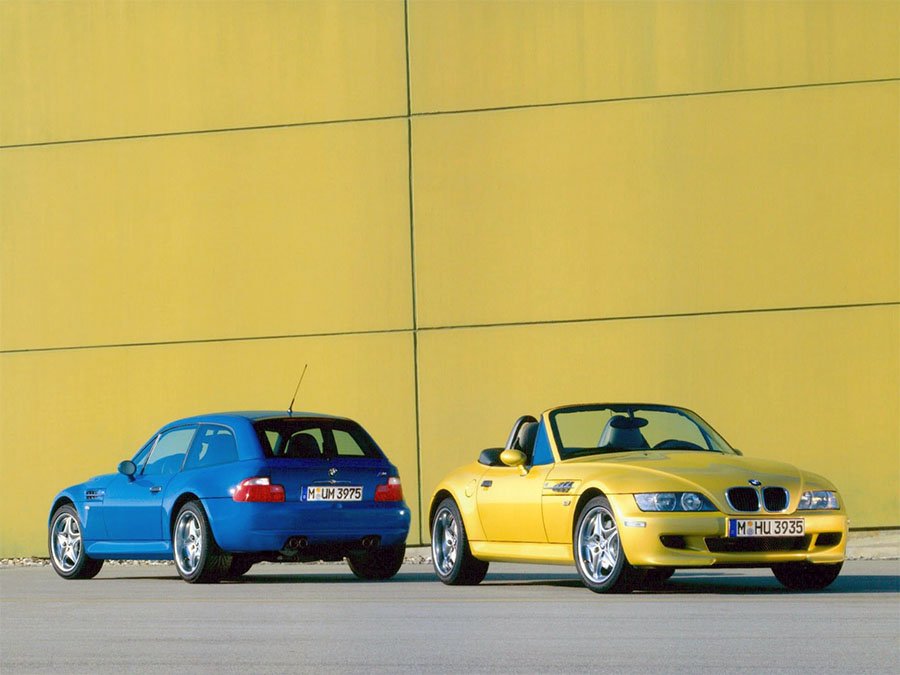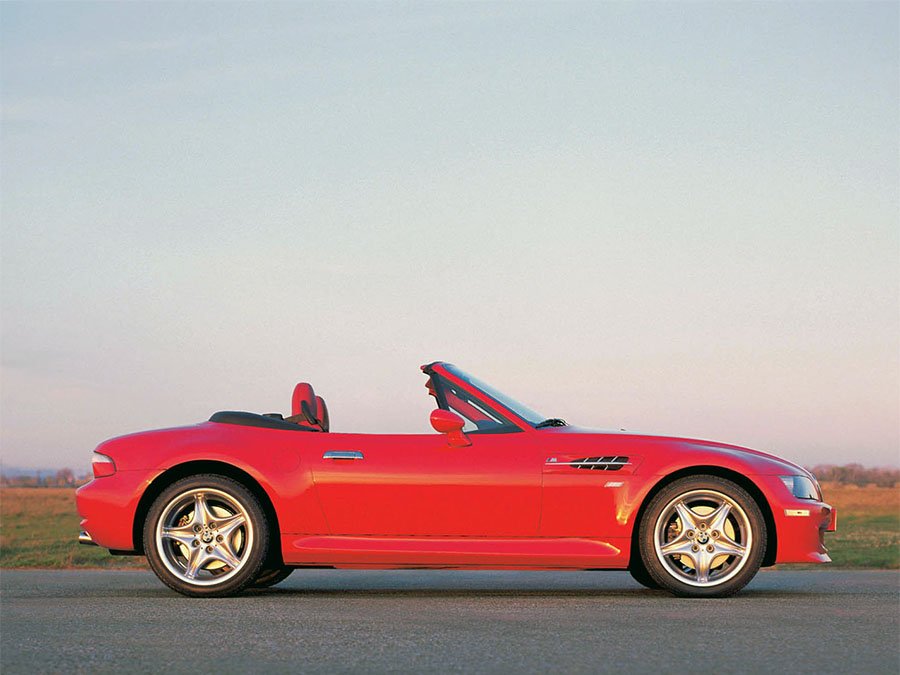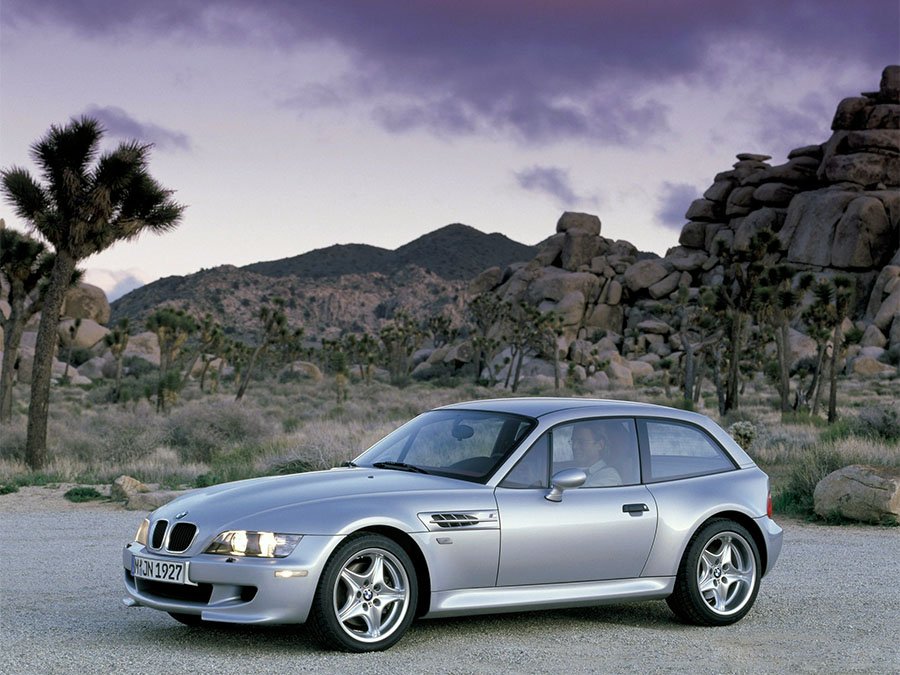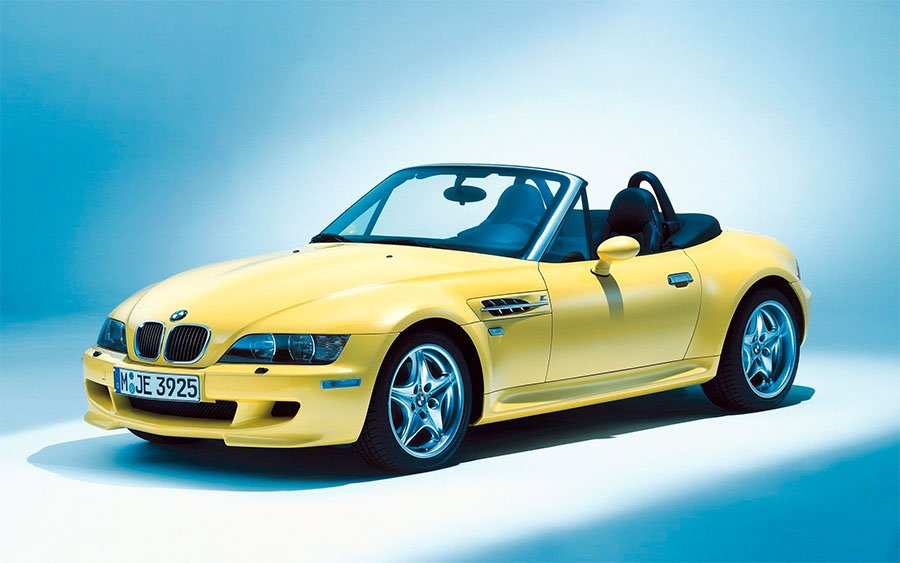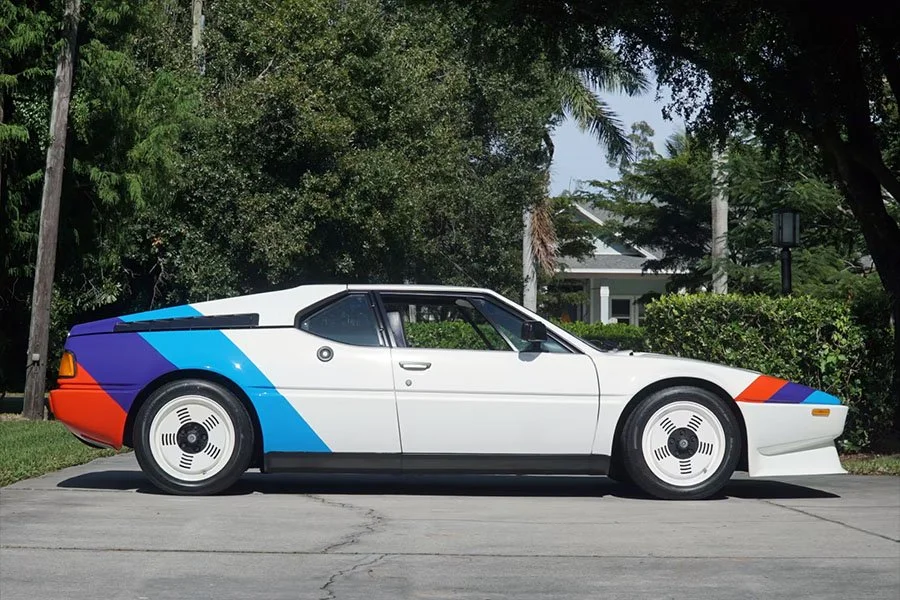Guide: BMW E36/7 Z3 M Roadster & E36/8 Z3 M Coupe - a Historical & Technical Appraisal
/BACKGROUND
The Z line of two-seat sports cars came to fruition following the creation of BMW Technik which was established in 1985 to design and develop avant-garde concepts for new vehicles and technologies.
The 60-strong BMW Technik team’s first creation was a light weight, compact, front-engined two-seat roadster dubbed the Z1.
Unveiled at the Frankfurt Motor Show in September 1987, the exciting Z1 was clothed with removable injection-moulded thermoplastic panels and had vertical sliding doors that electrically dropped into oversized sills. Most of the car’s mechanical components were sourced from the E30 3-series which were fitted into a steel monocoque that had been hot-dipped in zinc to increase its torsional rigidity.
Despite its very high price, BMW took over 4000 orders for the Z1 before production began. 8000 were ultimately built between October 1988 and June 1991.
However, while the Z1 had proven a commercial hit, work on a successor did not begin until 1991. Customers had to wait until June 1995 before the resultant Z3 was announced in a press release from BMW North America.
The Z3 was the first BMW to be manufactured at the firm’s new production facility in Spartanburg, South Carolina. Promisingly, BMW received over 8000 deposits before production began in September ‘95.
Meanwhile, although the Z1 had been almost universally well received, there was some disappointment that BMW never offered a high performance version.
No such criticism could be directed the Z3’s way though; at the Geneva Motor Show in March 1996, BMW unveiled the Z3 M Roadster.
Equipped with an array of BMW Motorsport equipment (to include the 321bhp straight six engine from the concurrent M3), the Z3 M Roadster entered production in September ‘96 for the 1997 model year.
Despite the fact the Z3 had originally been conceived purely as a two-seat drop top, engineers back in Germany had secretly begun work on a fixed head variant. Once approved by management, the Shooting-break-style Z3 Coupe was unveiled at the Frankfurt Motor Show in September 1997. Excitingly, alongside it was a BMW Motorsport iteration known as the Z3 M Coupe.
Production of the Z3 M Coupe got underway in April 1998.
CHASSIS
The Z3 was based on a steel monocoque bodyshell with a 2446mm wheelbase.
To increase torsional rigidity, the windscreen was strengthened and quarterlights were added along with door braces.
Both the M Roadster and Coupe were further enhanced over the rest of the Z3 range by way of a reinforced front subframe.
Inevitably, thanks to its fixed roof and some extra reinforcement to the basic chassis, the Z3 M Coupe was considerably stiffer than the Roadster (by a factor of 2.7).
As per every Z3, suspension was via MacPherson struts up front and semi-trailing arms at the rear.
For these high performance iterations, BMW Motorsport reconfigured the suspension geometry and reinforced the rear-mounted semi-trailing arms. Shorter springs and firmer dampers were also installed which resulted in a 10mm lower ride height. Thicker anti-roll bars were fitted at either end. The Z3 M Coupe was set-up slightly stiffer than the Roadster.
Enormous ventilated brake discs were imported from the 3.2-litre E36 M3 Evolution. 315mm diameter discs were fitted at the front along with 313mm diameter discs at the rear. Like the M3, floating brake calipers sourced from the E34 M5 were installed.
ABS was standard along with power steering.
17-inch diameter five spoke M RoadStar alloy wheels were unique to the Z3 M. The fronts were 7.5-inches wide, the rears were 9-inches wide and they were originally shod with Michelin Pilot Sport tyres.
Track was 94mm wider at the rear axle above which a 51.1-litre fuel tank was mounted.
ENGINE / TRANSMISSION
In the engine bay was the M3 Evolution’s 3.2-litre Type S50 B32 engine which brimmed with state-of-the-art features, several of which had come about as the direct result of BMW Motorsport’s collaboration with McLaren to supply engines for the British firm’s F1 supercar.
Perhaps the most notable upgrade over the original E36 M3 had been the addition of a Double Vanos system that continuously varied the valve timing on both the inlet camshaft and exhaust.
New DME MSS50 engine management had also been developed in conjunction with Siemens. It was the most advanced engine management system yet seen in a BMW and could execute up to 20 million commands per second.
Other upgrades added to the S50 B32 engine had included bigger inlet valves, lightweight pistons, graphite-coated con-rods, an improved dual mass flywheel, a modified vibration damper, a supplementary oil pump to counter oil surge when cornering and a new exhaust manifold.
As before, this latest B32 iteration of the S50 motor featured a cast iron block with ported and polished DOHC 24-valve light alloy head.
It had been bored from 86mm to 86.4mm and stroked from 85.8mm to 91mm for an overall displacement of 3210cc (a gain of 211cc).
The compression ratio was increased from 10.8:1 to 11.3:1.
Peak output was 321bhp at 7400rpm and 258lb-ft at 3250rpm.
Significantly, the S50 B32 motor was the first BMW production engine to garner over 100bhp per litre.
Unique the the Z3 M was a new four outlet exhaust system.
Instead of the Getrag six-speed manual gearbox fitted to the M3 Evolution, the Z3 M ran a five-speed Type C unit sourced from ZF. Transmission was through a single-plate Sachs clutch and a limited-slip differential with 25% locking factor.
BODYWORK
The BMW Motorsport-tuned Z3 Coupe and Roadster were based on the same wide-arched shell as the other six cylinder variants in the Z3 range.
However, they did incorporate a number of subtle enhancements as expected of any M-badged car.
A new front bumper assembly featured a re-shaped full width intake aperture that did without fog lights in favour of outboard brake cooling ducts. At each corner were aggressive body coloured winglets to provide a little extra downforce.
Carved out from each front fender were re-contoured engine cooling vents embellished with a horizontal chrome trim and BMW Motorsport badge.
A little further back, new exterior mirrors were designed to cut through the air with minimal resistance.
Chrome windscreen washer nozzles were added.
Although tail light shape differed according to body style, both the M Coupe and Roadster came with clear instead of amber indicator lenses.
Uniquely, the M Roadster had its BMW badge mounted on the trunk lid. The tail fascia was also different to the rest of the Z3 range as it housed the licence plate (normally mounted on the bumper), a left-hand side lock (normally located on the right-hand side) and a BMW Motorsport badge.
In a similar fashion, the licence plate was also moved up to the tailgate fascia on the M Coupe (now mounted under a chrome instead of black plastic trim that also housed the locking mechanism). A BMW Motorsport badge was fitted (on the right-hand side).
New rear bumpers were fitted to both versions. Underneath the re-contoured upper section (which now included a body coloured blister to illuminate the licence plate), cut outs were made to incorporate the two exhaust pipes per side.
INTERIOR
Inside, the Z3 M retained the standard car’s stylised twin-zone dash and overall cockpit layout to which a number of BMW Motorsport-themed upgrades were added.
Red needles were fitted to the gauges along with an M-logo to the tachometer. Mounted directly behind the small diameter M-branded three-spoke steering wheel with tri-colour stitching were a recalibrated speedo and rev counter. As usual, located off to the sides were smaller read outs for fuel level and water temperature.
Whereas the regular Z3 came with a bank of switches underneath the ventilation controls mounted on the centre console, the Z3 M had a bank of three additional instruments: a clock, an outside temperature gauge and an oil pressure read out.
These, along with the rotary controls for the ventilation system, the four dials in the main instrument binnacle and the gear gaiter, were set within attractive chrome-plated bezels unique to the Z3 M. Other chrome additions included the door handles and M-branded sill plates.
As a consequence of the additional three centre console-mounted gauges, the Z3 M came with a bank of supplementary switches alongside the cigar lighter just ahead of the gear lever. The gear lever itself now came with an illuminated M-branded shift knob.
There were also new body hugging sports seats with an elaborate stitch pattern. These, along with the centre console and grab handles, were originally upholstered in Nappa leather.
Another piece of cockpit equipment unique to the Z3 M was its oval rear view mirror.
In addition to leather upholstery, the list of standard equipment included heated electric seats, electric windows, electric heated mirrors, a radio cassette player and mono or two-tone upholstery (dash, steering wheel, seats and door panels).
The Roadster’s roof could be specified in a choice of three colours: Black, Red or Blue.
OPTIONS
Factory-fitted optional extras were as follows: air-conditioning, cruise control, metallic paint, headlight washers, a graduated tint windscreen and choice of audio systems to include a single BMW Business single CD player or Harmon Kardon Hi-Fi.
Some options were installed as standard equipment in certain markets.
WEIGHT / PERFORMANCE
The Z3 M Roadster weighed 1425kg. Despite its considerably stiffer bodyshell, the Z3 M Coupe was just 40kg heavier (1465kg).
Both versions had a top speed electronically limited to 155mph and 0-62mph time of 5.4 seconds.
USA VERSION
Because the S50 B52 engine did not meet US emissions standards, those cars destined to remain in their country of origin came with a toned down short stroke S52 B32 power unit of the type fitted to US and Canadian market M3s of the period.
Derived from the standard M52 unit, displacement was taken out from 3152cc to 3201cc. Other enhancements included more finely balanced camshafts, valve lifters and springs plus spring seats with reduced mass. Revised intake and exhaust systems were fitted as well.
Peak output was 240bhp at 6000rpm and 236lb-ft at 3800rpm.
To reflect its less potent engine, the final drive was switched from 3.15:1 to 3.23:1.
While US variants did not get the two-piece floating calipers, they were retained for the Canadian market.
Externally, amber instead of clear side marker lights were integrated to the front bumper, free-form headlights replaced the usual ellipsoid units and the single rear licence plate illuminating pod mounted on the rear bumper was switched to a pair of pods either side of the plate.
Inside, a 160mph speedo replaced the normal 170mph item, a voltmeter replaced the outside temperature gauge and a new rev counter with graduated red line was installed.
1998 MODEL YEAR PRODUCTION CHANGES
For the 1998 model year (production of which started in September 1997), the Z3 M Roadster was upgraded with a rollover bar behind each seat. A hardtop was also added to the options list.
1999 MODEL YEAR PRODUCTION CHANGES
For the 1999 model year (production of which began in September 1998) BMW fitted their new ABS-linked electronic traction control system dubbed Automatic Stability Control plus Traction (ASC+T). Should a loss of traction be detected, the ASC+T system would apply the brakes and reduce engine power. If required, the ASC+T could be de-activated via a centre console-mounted button.
Side impact airbags were added to the options list and air-conditioning was made standard in several markets.
In April 1999, BMW freshened the front end up with chrome headlight bezels and chrome instead of black kidney grille vanes. The Roadster’s soft top was given extra insulation, new improved airbags were fitted and the fuel filler door now locked / unlocked via the main central locking system.
TEMPORARY END TO PRODUCTION
BMW temporarily halted Z3 M production in June 2000.
SWITCH TO S54 ENGINE
Production re-started seven months later in February 2001, by which time the Z3 M had undergone some major changes.
Most significantly, the S50 and S52 engines had been replaced with a new S54 ‘world’ motor derived from the recently introduced E46 M3.
The S54 engine was another straight six with a cast-iron block, light alloy twin cam head with four valves per cylinder and wet-sump lubrication. It had been enlarged from 3210cccc to 3246cc by taking the bore from 86.1mm to 87mm while stroke remained unchanged at 91mm.
Other enhancements included uprated camshafts, finger-type rocker arms instead of bucket-style tappets (for reduced reciprocating mass), a light weight one-piece aluminium head and a scavenging pump to avoid oil starvation during hard cornering. The high pressure Double Vanos variable valve timing system was modified to provide faster operation at high revs.
Additionally, the compression ratio was increased from 11.3:1 to 11.5:1.
Engine management was courtesy of the new BMW-Siemans MSS54 system.
The horsepower rating was 325bhp at 7400 rpm and 258 lb-ft was developed at 4900 rpm.
This compared to 321bhp at 7400rpm and 258lb-ft at 3250rpm.
Meanwhile, the E46 M3 pumped out 343bhp at 7900rpm and 262lb-ft at 4900rpm.
The S54 engine was immediately identifiable on account of its M-branded cam cover whereas the outgoing S50 motor had featured a BMW M Power script.
A 3.15:1 final drive was employed in all markets.
The ASC+T traction control system was replaced with BMW’s new Dynamic Stability Control (DSC). In addition to minimising any loss of traction, the DSC system measured steering angle, vehicle speed, cornering force, brake pressure and the vehicle rotation to reduce oversteer and understeer. The DSC could be disengaged by way of a centre console-mounted button.
Other upgrades saw the M Coupe’s stiffer suspension settings adopted on the Roadster, a new electronic type pressure monitoring device installed and a darker Chrome Shadow finish for the wheels.
Inside, the instrumentation was revised with grey instead of black backing and a new typeface. There was also a new rear view mirror with chrome shroud and auto-dimming feature.
New options included a Chrome Line exterior trim pack, an eight speaker audio system and a trunk-mounted CD shuttle.
END OF PRODUCTION
Z3 M production ended in May 2002 by which time 21,613 had been completed.
This figure comprised 15,322 examples of the Z3 M Roadster and 6291 examples of the Z3 M Coupe.
Precise numbers of each iteration are as follows:
LHD Euro spec. Z3 M Roadster with S50 engine (09/96 to 06/00) 3557 built
RHD Euro spec. Z3 M Roadster with S50 engine (11/97 to 06/00) 918 built
LHD North American spec. Z3 M Roadster with S52 engine (02/98 to 07/00) 8938 built
LHD Euro spec. Z3 M Coupe with S50 engine (04/98 to 06/00) 2178 built
RHD Euro spec. Z3 M Coupe with S50 engine (09/98 to 06/00) 821 built
LHD North American spec. Z3 M Coupe with S52 engine (07/98 to 06/00) 2180 built
LHD Euro spec. Z3 M Roadster with S54 engine (02/01 to 05/02) 271 built
RHD Euro spec. Z3 M Roadster with S54 engine (02/01 to 04/02) 73 built
LHD North American spec. Z3 M Roadster with S54 engine (02/01 to 05/02) 1565 built
LHD Euro spec. Z3 M Coupe with S54 engine (02/01 to 05/02) 269 built
RHD Euro spec. Z3 M Coupe with S54 engine (02/01 to 05/02) 165 built
LHD North American spec. Z3 M Coupe with S54 engine (02/01 to 05/02) 678 built
The Z3 was subsequently replaced by the appropriately titled Z4 which debuted in E85 Roadster trim at the Paris Motor Show in September 2002. The E86 Z4 Coupe followed at Frankfurt in September 2005. M versions of both body styles then arrived during 2006.
Text copyright: Supercar Nostalgia
Photo copyright: BMW - https://www.bmw.com
